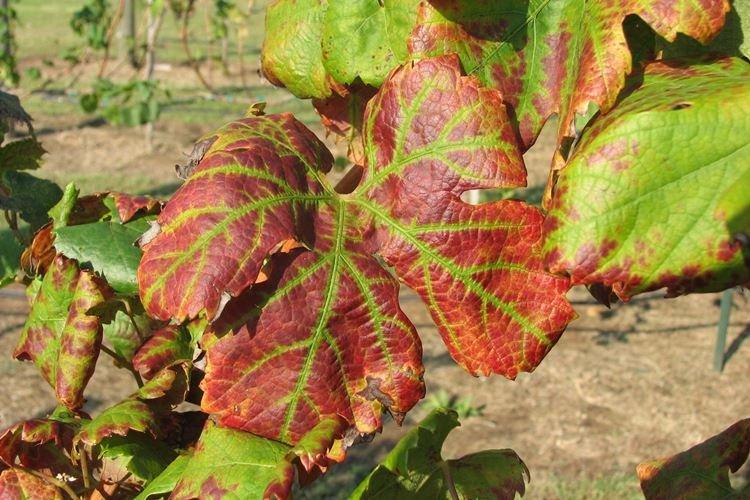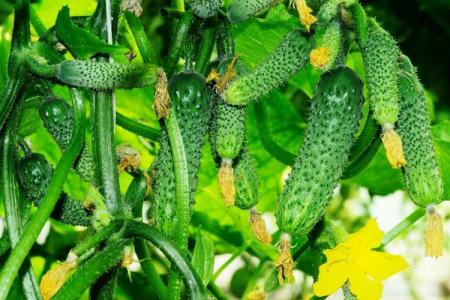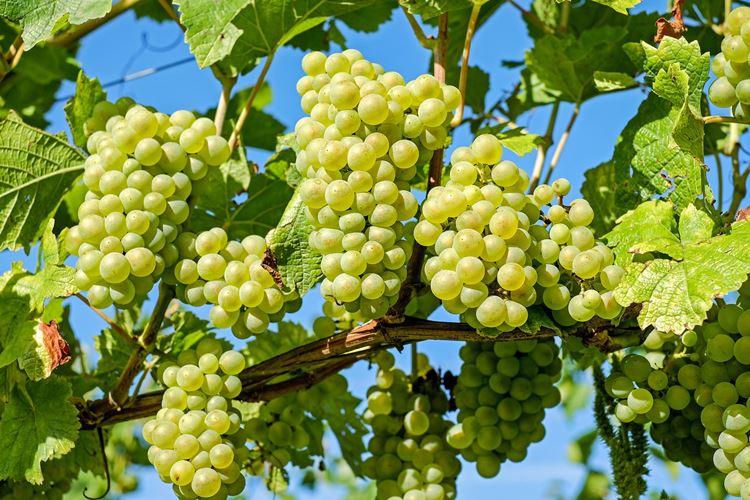
The specificity of caring for a vineyard is significantly different from any other planting. But one thing remains unchanged: even with impeccable keeping conditions, grapes are not immune from infections. It is important to meet the problem prepared, so we have compiled a selection of the most common grape diseases with descriptions and photographs, and at the same time we learned the best methods of treatment!
1. Mildew
Behind the unusual name is a fungal disease, which gardeners have called downy mildew. First, the leaves of the grapes turn yellow, then - gradually become covered with seemingly greasy spots. At high humidity, on the reverse side of the plate, a whitish fluffy bloom grows - these are myceliums, which spread spores.
There is no immunity to mildew in the grape varieties we are used to, all the more so - the fungus can appear several times per season. For prophylaxis before flowering, use Bordeaux liquid, Arcerid, Polychom or similar preparations. Throughout the summer, spray the leaves with an infusion of a kilogram of wood ash once a week. The development of mildew is also well inhibited by planting dill in the aisles.
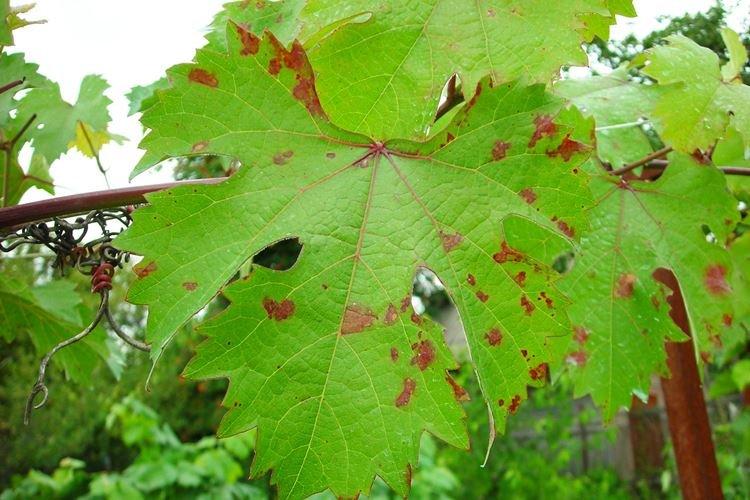
2. Gray rot
This fungus prefers cool, rainy days, and multiplies in such conditions in a matter of days. The leaves and shoots of grapes are rapidly covered with a gray bloom, and the formed berries wrinkle, darken and rot.
For the prevention of the disease, treatment with sulfur-containing fungicides or anti-mildew preparations is needed. For spraying once a week and a half, dilute 1 ml of pharmaceutical iodine in a liter of water.
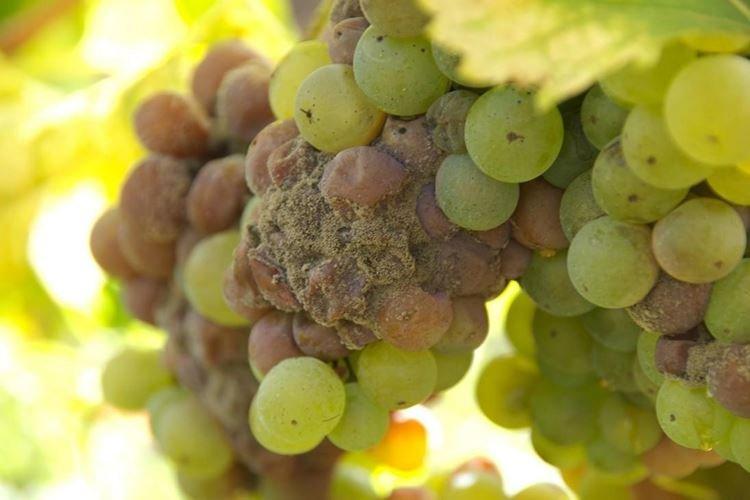
3. Sour rot
This is a bacterial disease caused by acetic bacteria. It is easily recognizable by its characteristic smell and by the fact that the affected vines attract all the insects in the area. The berries turn red rapidly, rot and burst.
Damaged berries must be completely removed and destroyed. Treat the grapes with Bordeaux liquid, Fitoverm or special chemicals. Bacteria are often carried by insects, so use insecticides and baits. There are very effective sulfur-based powders for dusting.
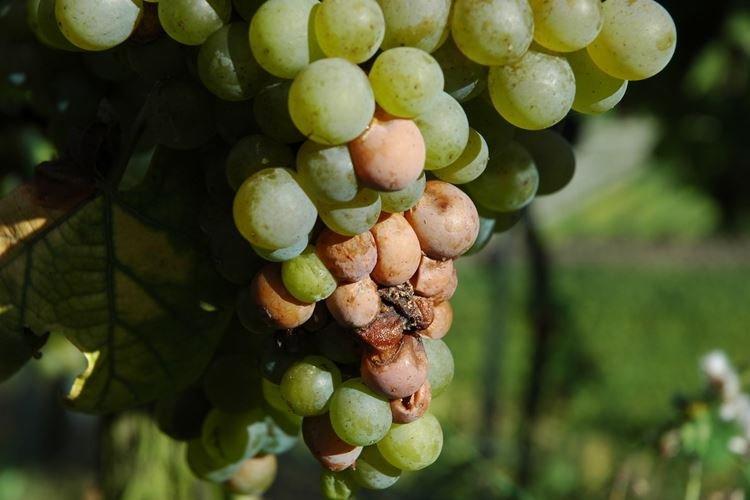
4. Oidium
Unlike mildew, mildew is the same fungus that is called powdery mildew. A whitish dusty coating appears on shoots and leaves, and then they curl and deform. If the grapes are already in bloom, the flowers die, and if they bear fruit, the berries dry out.
For treatment from the beginning of spring, spray with sulfur-containing fungicides, such as Topaz, Horus or Thanos. For the weekly summer treatment, use an infusion of green manure or stale cut grass.
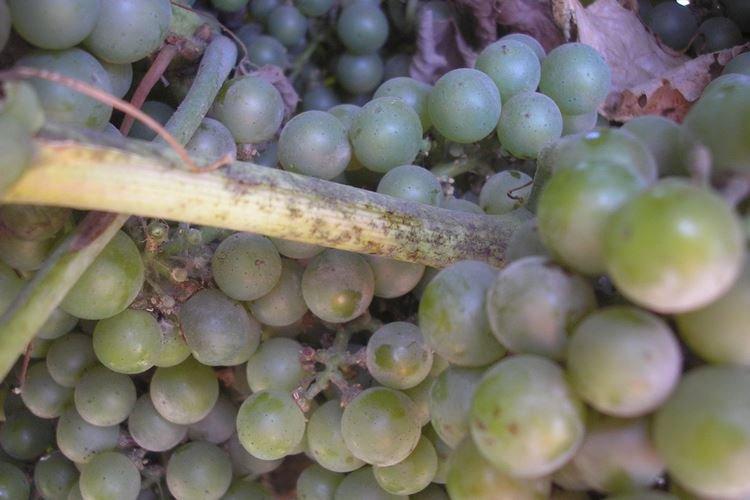
5. Bacterial cancer
It is a serious bacterial disease that affects grapes at a structural level. On the shoots, growths-tumors appear, which gradually spread further and further.
The disease cannot be cured - in any case, it will destroy the grapes in a maximum of a couple of years, and along the way - it will move to neighboring areas and penetrate the soil. Therefore, the affected plant must be removed and burned, and nothing should be planted in its place for 2-3 years.
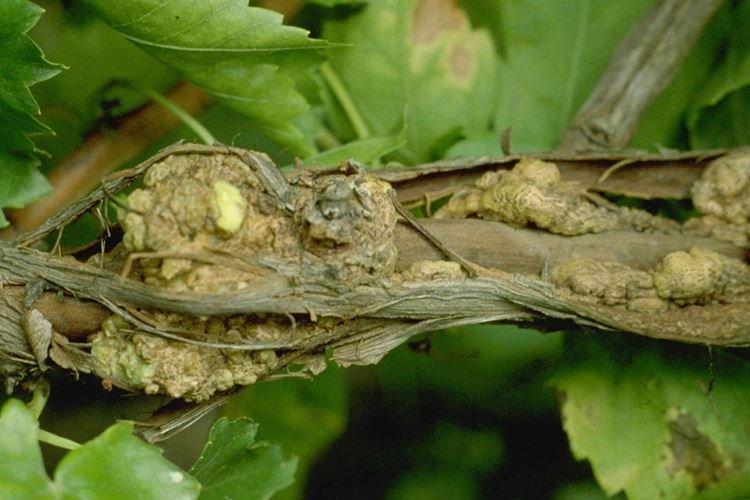
6. Mosaic
Vineyard viruses are still poorly known, and there are several species of mosaics alone. The vine grows more slowly, dries up, curls or changes color. The leaves turn yellow with chaotic spots from the veins, and the bark gradually cracks. The grape vines affected by the disease need to be dug up and burned, the site should be treated with antiseptics and nothing should be grown there for a couple of years.
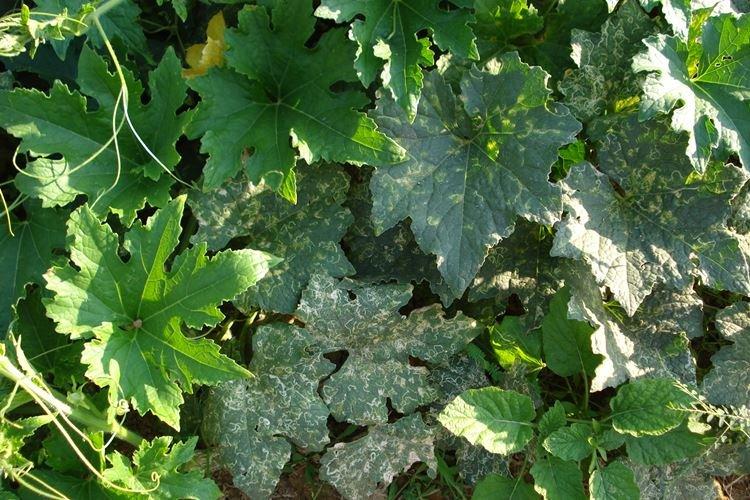
7. Anthracnose
Like other berries, grapes could not escape anthracnose, which is provoked by several genera of mushrooms at once. They usually appear in warm weather, but they winter safely in dry leaves and soil.Dark spots with a light border appear on the leaves and shoots, which then crack, become covered with ulcers or fall out.
As soon as the shoots begin to actively grow, treat the vineyard with Bordeaux liquid. In the future, use specialized fungicides - Skor, Ridomil and the like. A strong infusion of crushed garlic is an effective folk remedy for treating leaves twice a season.
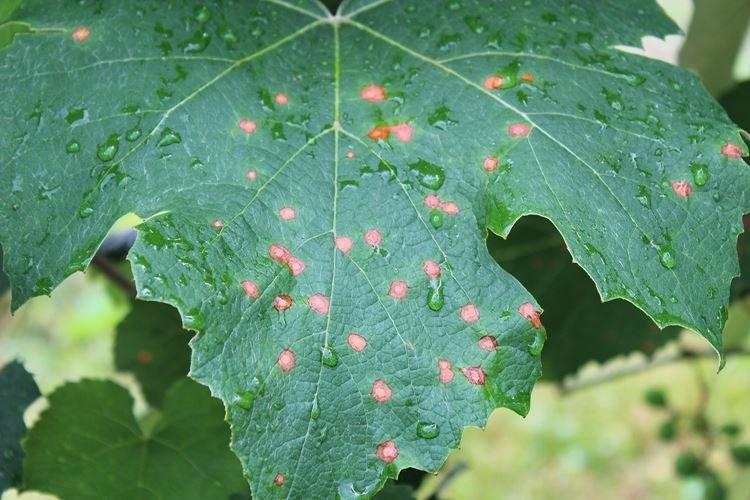
8. White rot
The disease develops on humid hot days and affects all parts of the vine. The berries wrinkle and dry up, and the shoots and leaves are deformed and covered with whitish spots, change color. Most often, the infection gets through mechanical damage, so it is important to always treat wounds with antiseptics and garden varnish.
It is necessary to immediately destroy all affected fragments and berries. Remove fallen leaves in time and do not leave waste for the winter, because this fungus waits in them for frost. For symptoms, spray the vineyard twice with Bordeaux liquid at weekly intervals.
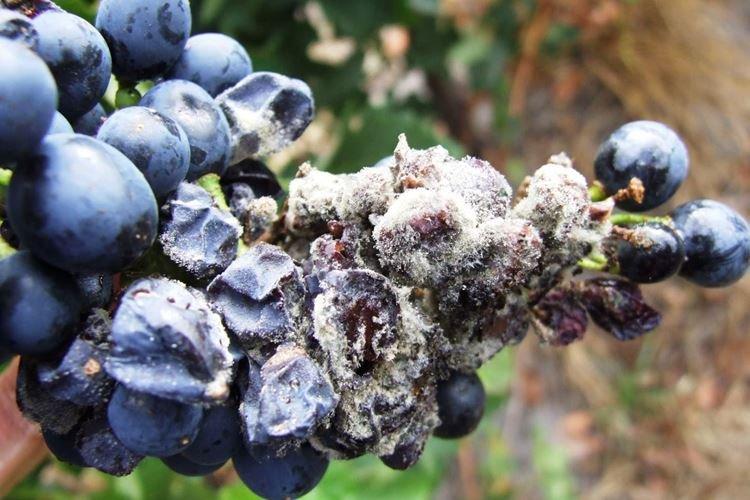
9. Aspergillus rot
This fungus spreads on the hottest summer days, when temperatures rise above 30 degrees. The grapes are covered with pale spots, which gradually darken and deform. Affected clusters eventually become covered with spores so that they appear completely black.
Use top dressing and immunomodulating drugs to make the skin of the berries denser and more elastic. Treat grapes with copper sulfate and specialized fungicides against white and gray rot.
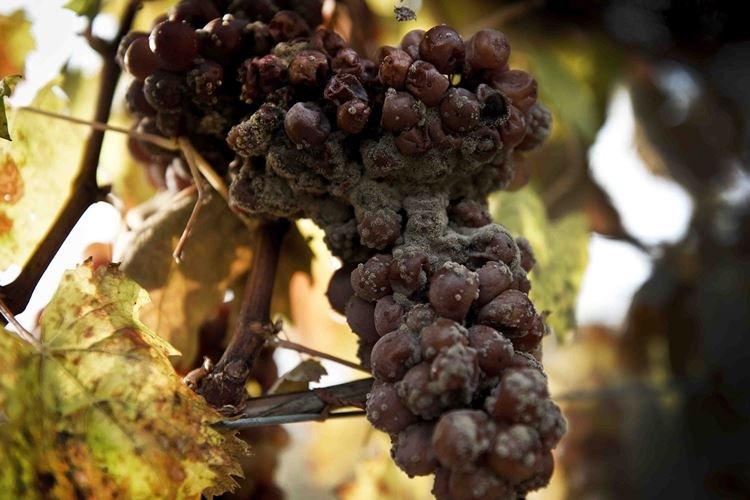
10. Alternaria
This is one of the most dangerous fungal diseases of grapes, the symptoms of which resemble odium. The leaves are covered with light spots with signs of necrosis, and a velvety bloom with a metallic sheen appears on the berries. It is impossible for the affected bunches to get into the harvested crop, because the disease will spread throughout the container during storage.
Always remove plant debris, dead bark and leaves from the site for the winter. In the spring, spray the grapes with Bordeaux liquid and mancozeb-based fungicides like Ridomil. If the clusters are already forming, use Skor, Quadris or similar preparations at intervals of one and a half weeks.
